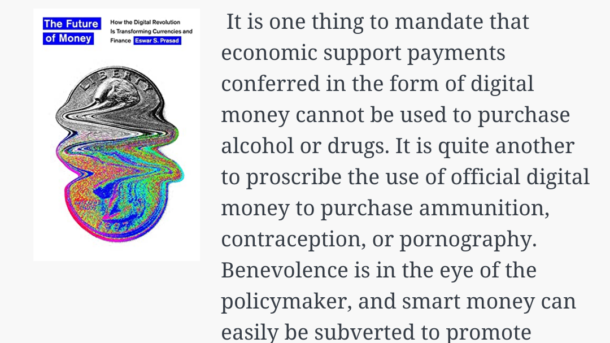A benevolent government’s good intentions can sometimes create more problems than they solve and can be subverted by human actions. When I was a young boy, my middle-class family, and others like it in India, received ration cards for rice and sugar. This was the government’s way of providing essentials to its population at a subsidized price. Keeping the price for any product low, however, reduces producers’ incentive to supply it. The government would try to fix this problem it had created by guaranteeing a minimum price to producers for those essentials that it then supplied to consumers at a lower price. This policy, intended to help the poor and middle class, was great for attracting votes but ate into government finances. Moreover, it bred all sorts of corruption—government officials in charge of handing out ration cards had to be bribed, workers for the parties in power obtained cards more easily, and merchants would hoard some of the supply and sell it off in the open market at higher prices. Such “leakage” from corruption meant that the cost of these programs to support the poor was far greater than the benefits received by the intended recipients. To fix some of these problems, the Indian government has switched to cash transfers. Using national identification numbers and bank accounts attached to those numbers, the government simply doles out cash rather than subsidizing specific products. This turns out to be cheaper for the government, more beneficial for the recipients, and less harmful to the efficient operation of product markets. There is one catch—the need to ensure that a household head does not use the payments to go on a drinking binge rather than feeding their family. If cash can be withdrawn from a bank account with no limitations, this would be difficult to monitor. It is not just developing countries that face this problem. One of the programs in the United States designed to support those living below the poverty line is the Food Stamp Program. The government prevents its misuse by prohibiting the use of food stamps for other expenditures. Retailers can accept the food stamps as payment only for authorized food products. Digital smart money could solve many of these problems. The government could simply designate certain units of money that it provides to low-income individuals as usable only for products with specific product codes and only at approved merchants. This feature is easy to embed in digital money and can be modified in real time if necessary. For instance, individuals living in a particular zip code could be permitted to use their allocations for cleaning supplies, in addition to food, in the aftermath of a hurricane. Other features could make central bank money more effective in achieving monetary policy objectives. Helicopter drops of money into CBDC accounts could conceivably carry spending conditions that permit only certain classes of expenditure. To amplify their effect in stimulating economic activity, transfers into CBDC accounts might, for example, carry the requirement that they be spent on durable goods, as such spending has been shown to demonstrate limited responsiveness to traditional forms of economic stimulus (including low interest rates) during recessions. Moreover, these transfers of money could also be embedded with expiration dates, encouraging consumption rather than saving. This is all very well from a policy standpoint but also highlights a major risk. Digital money could one day be used for social engineering that has nothing to do with economic outcomes. It is one thing to mandate that economic support payments conferred in the form of digital money cannot be used to purchase alcohol or drugs. It is quite another to proscribe the use of official digital money to purchase ammunition, contraception, or pornography. Benevolence is in the eye of the policymaker, and smart money can easily be subverted to promote specific social and political objectives rather than serving as a neutral medium of exchange. This concern is particularly relevant for countries with authoritarian governments.
Central Bank Digital Currencies (CDBCs) is one of the latest innovation that we might begin hearing more about as a government alternative against the decentralised nature of cryptocurrencies. What this ensures is that it retains all the benefits of cryptocurrencies (ease of transaction, low payment fees) while retaining a centralised authority to manage to alleviate issues such as illegal transactions or money laundering.
If money eventually becomes fully digital and centralised, then it becomes ever more susceptible towards corruption from not just authoritarian governments, but even political risks from well meaning policy makers who think that whatever they are pushing for is a net benefit to society. While cryptocurrencies in their present state do not provide great privacy and much utility, keeping them rather decentralised seems a lot more appealing than having a central authority that will be able to control how you spend your money, especially if we no longer have any physical form of cash.
Power usually corrupts, and i just can’t imagine having a system without physical cash where the government can instantly dictate what anyone can use their own money for in literally just a few clicks.



